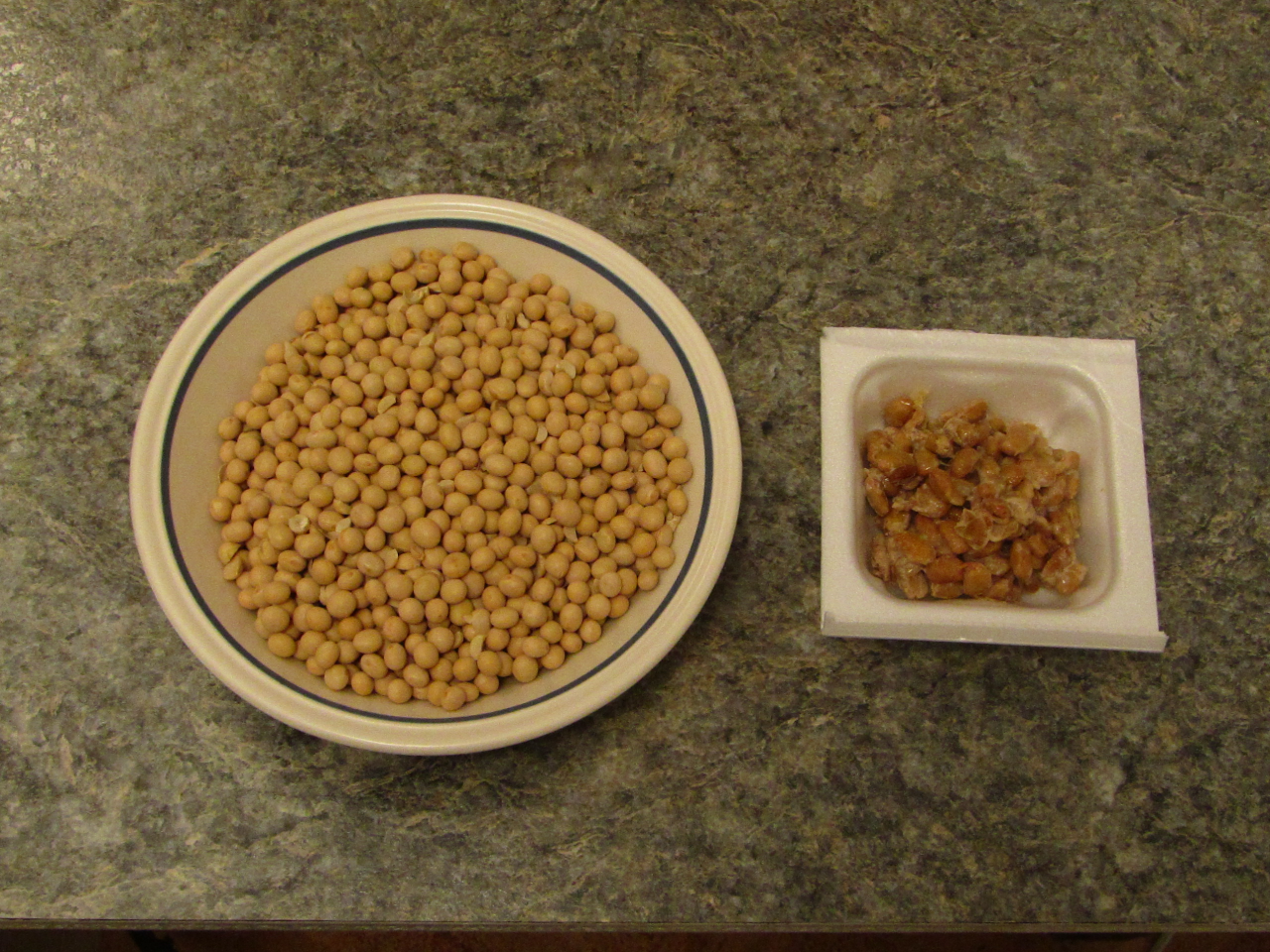This post contains affiliate links.
Natto is a live fermentation product made from cooked soy beans and inoculated with bacillus subtilis, a common bacteria found mostly in grasses. This bacteria is still present in natto beans and can be used to inoculate a new set of beans simply by mixing finished natto beans with freshly cooked ones, then incubating the beans for 24 hours.
Natto can be made a number of ways: it can be made from scratch using wild bacteria found in nature, it can be inoculated with natto starter or it can be made by using previously incubated natto beans . Each of these three methods produces a differently flavored natto but they all have the sticky, stringy biofilm which is produced by the bacteria used to ferment the beans. For instructions on how to use all three of these methods check out this article here.
To inoculate natto from natto beans you simply need to introduce the freshly cooked soy beans with some natto beans. The process is as follows:
Soak the soy beans 8-12 hours
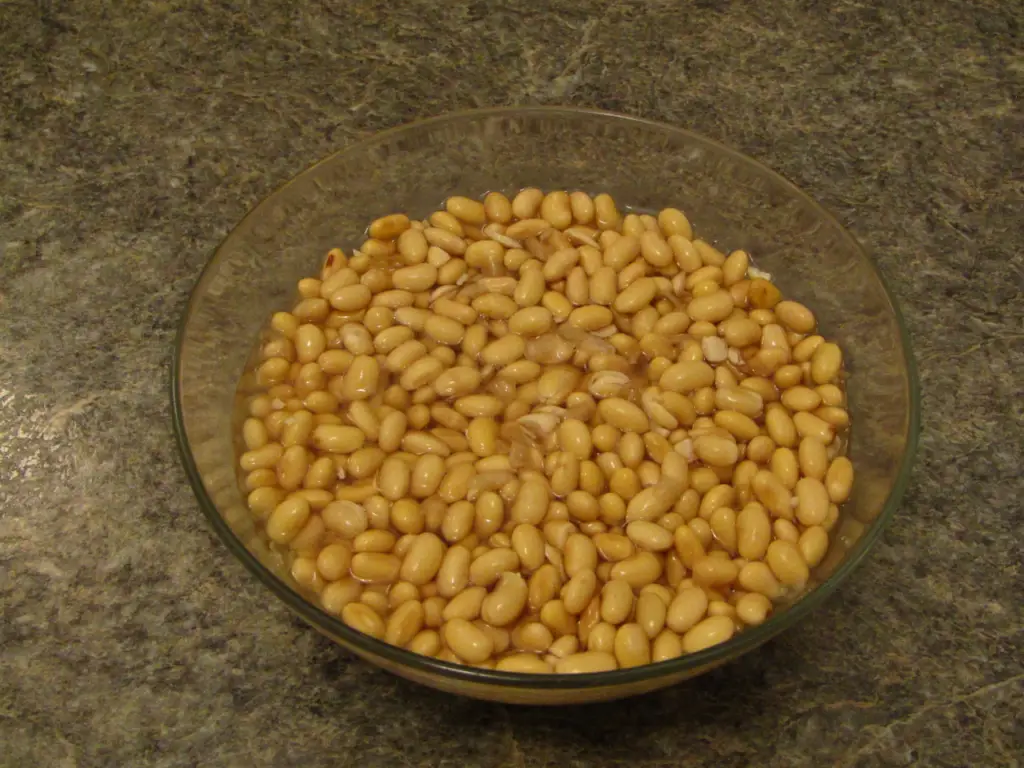
Cook the soy until soft but not mushy
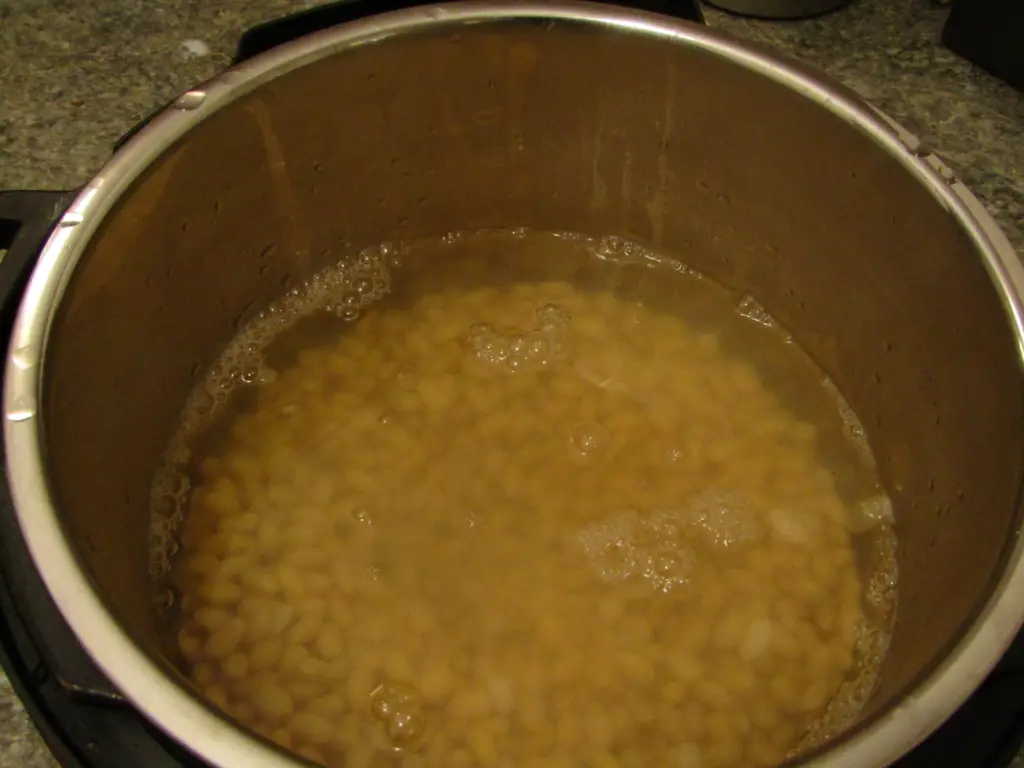
Cool the beans until they reach 115 degrees
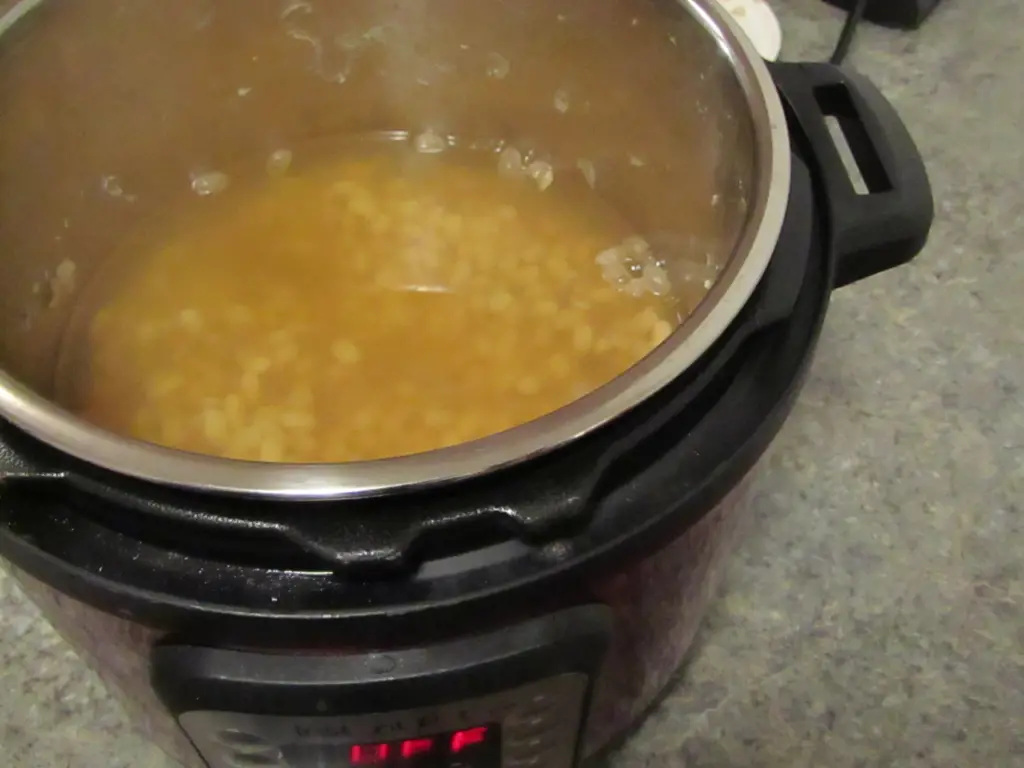
Spread the beans about 1″ thick and cool until they reach 115 degrees
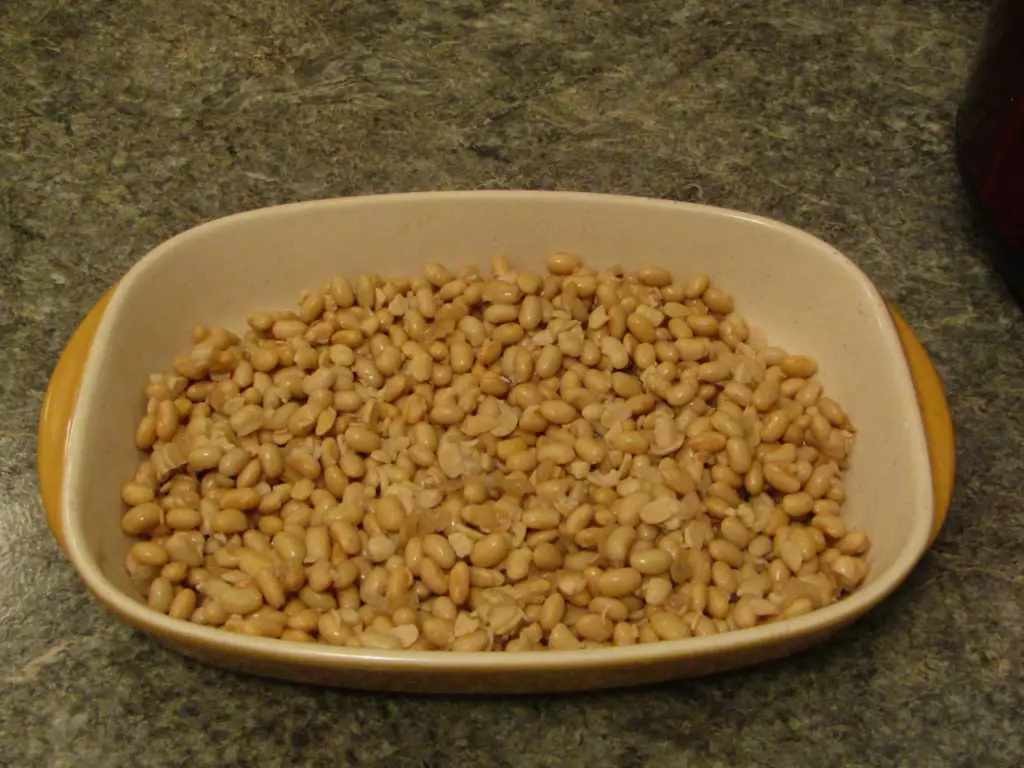
Mix in some natto beans (about ½ cup to 4 cups of cooked beans)
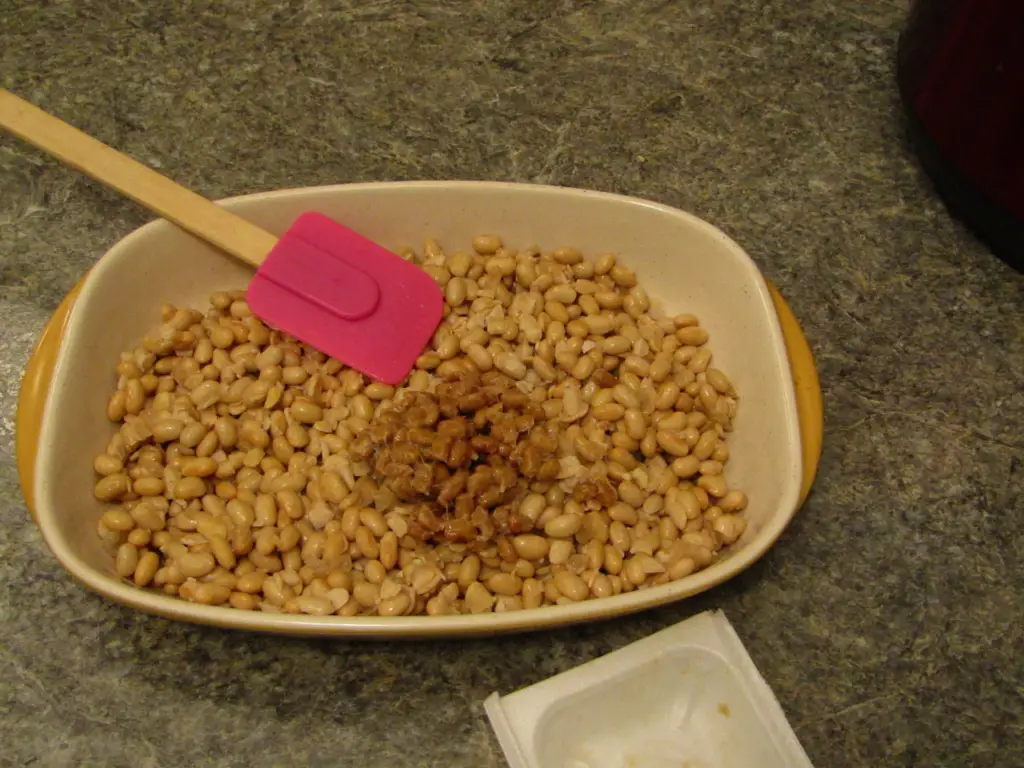
- Cover with plastic wrap and poke a few holes in the wrap to let in a little air
- Incubate the natto between 100 and 113 degrees for 24 hours
- Remove from the incubator and load into separate storage containers
- Refrigerate or freeze
How to eat natto
The traditional way to eat natto beans is for breakfast with rice and egg yoke. The rice is usually white sticky rice and the egg yoke is uncooked. The addition of soy sauce adds some salt. The whole mixture is then stirred to encourage the sticky slimy texture which makes for good natto. Eating it this way is an acquired taste which most people in North America are not willing to get past.
Other ways to eat natto are simpler. I like natto made with soy sauce, fermented mustard (for a recipe to make fermented mustard click here) and a little yogurt or kefir. Other ways to eat it include hot sauce, sweetened sauces like plum or hoisin or it can be eaten plain.
If you are having trouble getting past the sticky slimy texture of natto beans you can add it to your morning shake. The beans contribute to the creamy texture of a shake making it thicker and less likely to separate. Or you could add them to a morning breakfast bowl hiding the texture with a vinegar dressing.
Finally you don’t have to eat natto in the morning. You could have it in a salad. Asian dressings are often strong enough to help you ease into the flavor of natto while providing you with the benefits of the beans.
Why should you eat natto beans
There are several reasons why eating natto beans is a good idea, it is good for you, provides a simple breakfast, adds unique texture and flavor to your food and, once you get accustomed to it, it tastes great. Natto is a fermented soybean product which on the outset seems like a bad idea but in fact once the beans have been incubated they produce many vitamins and make minerals available in the beans which were not available before fermentation.
Eating natto is like drinking coffee. If you give a cup of coffee to a child they will find it offensive. The flavor of coffee must be acquired before you get to the benefits of it like the caffeine effect. Natto is also an acquired taste. It takes some time to learn to enjoy the slimy texture but once you have learned to enjoy the flavors you can become quite addicted to it.
Natto contains nattokinase which is a compound which helps cardiovascular health. It also contains vitamin k2, many b vitamins and several minerals which provide the building blocks of your body. The fiber which is not consumed by the bacteria help to feed your microbiome which help to provide you with vitamins and fight off unwanted bacterial species found in your digestive system.
For ten reasons why you should eat natto beans check out this article here.
What natto beans taste like
The characteristics of natto beans which most people remember are the slimy texture of the biofilm which surrounds the beans and the look of them once they have been prepared. Some have described the look of them as overcooked beans covered in snot. Not too appealing! Fortunately for natto (and for you) natto beans don’t taste anything like overcooked beans and snot.
Natto beans have an earthy flavor which resembles a soft cheese. The bacteria slightly acidifies the beans which give them a slightly tangy taste and depending on the method you use to inoculate the beans (for two other methods click here) three ways to make natto can have a number of complex tastes in the mouth. The biofilm which is so characteristic of natto remains in the mouth longer than most food which helps the flavors to linger in the mouth.
Another thing to consider is what condiments are used on the natto beans prior to eating them. Some people like soy sauce which adds a high salt flavor, some like sweet sauces which hit the sweet taste buds. Since taste can be made up of 5 different characteristics and everyone recognizes these characteristics differently it is difficult for one person to explain to another what something tastes like.
Why make your own natto beans
Like any food natto is made commercially and sold in specialty stores in North America. They come in little styrofoam packets usually in packs of three and are fairly inexpensive. So the question is why not just buy your natto instead of making it? Here are some of the reasons you might like to make your own natto.
For the fun of it
Fermenting your own food is often fun and provides a learning experience. Figuring out what type of beans you can use, how long to incubate them to make the best natto (according to you) and developing a system to prevent spoilage are all interesting problems which take creativity and learning, which for many of us is fun. For other fun fermentation projects check out how to make super creamy yogurt.
Because it is cheaper
Natto, although inexpensive, can be made from scratch much cheaper than buying already made beans. A package of soybeans which costs less than $0.50/g can make more natto than anyone should consume in a month.
Because it is sometimes hard to find
Natto is not as popular in North America as it is in Japan. This makes it sometimes difficult to find, especially if you live in a small town away from large populations of people. By making your own you can control where your natto comes from and always have some on hand when you want it.
It is environmentally responsible
Just like any other commercially prepared product natto production produces waste products which are difficult to get rid of. Natto usually comes in packages of three styrofoam containers held together with a plastic sheth. None of that is good for the environment and takes over 100 years to break down in landfills.

